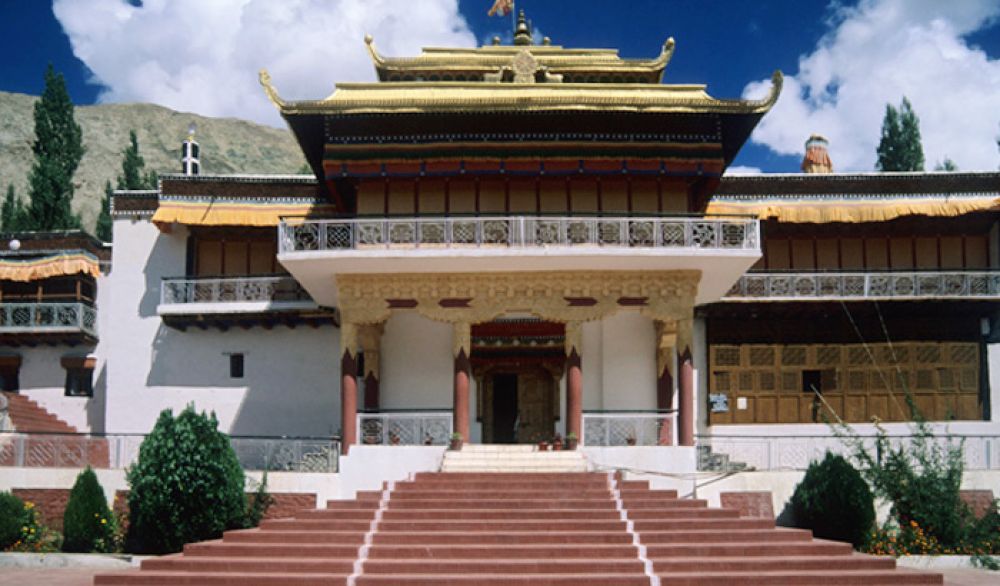

Samstanling Monastery, nestled in the serene expanse of Nubra Valley in Ladakh, India, has been a site of spiritual significance and a hidden gem in the eyes of travelers for centuries. Founded in the early 19th century by Lama Tsultim Nima, Samstanling Monastery is a flourishing center for the Yellow Hat Sect of Tibetan Buddhism. This tranquil abode, surrounded by golden wheat fields and small hamlets, is a true testament to the spiritual and cultural ethos of Ladakh.
Tourism to Samstanling Monastery began to gain traction in the late 20th century when the Indian government gradually opened up Ladakh to international tourists. Initially, it was predominantly visited by those seeking spiritual insight and scholars interested in Tibetan culture.
Over time, the monastery has become an important stop on the circuit for visitors exploring the Nubra Valley. The unique landscape of Nubra, featuring desert sand dunes against the backdrop of snow-capped mountains, adds to the allure of visiting Samstanling Monastery.
The Rise of Adventure and Cultural Tourism
In the early days, access to this remote region was limited. Tourism was mainly an adventure-driven activity, with visitors seeking the thrill of mountain passes, remote trails, and a glimpse into a culture relatively untouched by modernity. However, with improved infrastructure, easier permit requisites, and the advent of eco-friendly and cultural tourism, Samstanling Monastery has seen an uptick in tourist visits.
The Monastery’s Vibrant Architecture: With striking red and white buildings, adorned with gold-work and intricate paintings, Samstanling is a visual delight. The murals on the walls of the assembly hall, the elaborate thangkas, and the opulent statues of Buddha make it an art lover's paradise.
Traditional Festivals: The monastery becomes a hub of activity during religious events such as the Gustor Festival. The riot of colors, traditional music, and the famed Cham Dance with monks wearing ceremonial masks, make for an immersive cultural experience.
The Spiritual Experience: Visitors are drawn to experience the tranquility and meditative atmosphere of the monastery. For those seeking a spiritual retreat, Samstanling provides a place for quiet contemplation and interaction with the resident monks.
Local Interaction: Tourism has also encouraged homestays and interactions with the local Ladakhi people, offering an intimate glimpse into their daily lives, and in turn, benefiting the local economy.
Recently, there has been a growing trend in sustainable tourism, with attention to preserving the ecological and cultural integrity of Nubra Valley. Tour operators are now more likely to engage in responsible tourism practices, educating visitors on the importance of preserving the region's fragile ecosystem.
Digital Integration: The digital age has seen virtual tourism rise in popularity. With online galleries and virtual tours, those unable to visit in person can still experience the beauty of Samstanling Monastery, sparking greater interest and planning for future visits.
Adventure Activities: Activities like river rafting, camel safaris on the Hunder sand dunes, and trekking in the surrounding mountains, are increasingly packaged with cultural visits to places like Samstanling Monastery, offering a holistic Ladakh experience.
Visitation Guidelines: To ensure continued respect for the religious site and its community, tourists are advised to follow local customs and guidelines, such as dressing modestly, speaking softly within monastery grounds, and asking for permission before taking photographs.
As Samstanling Monastery continues to shine as a beacon of peace and cultural heritage, the combination of spiritual enrichment and natural beauty ensures that it remains a treasured destination for tourists from around the world.